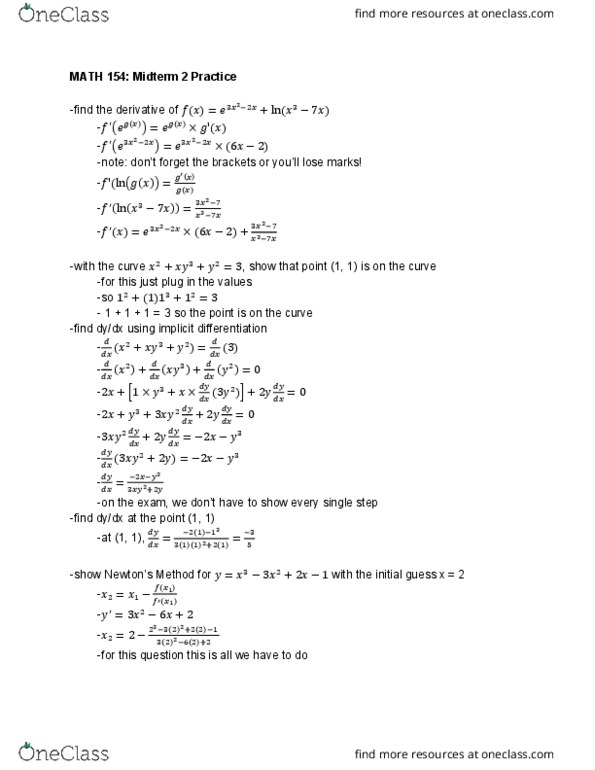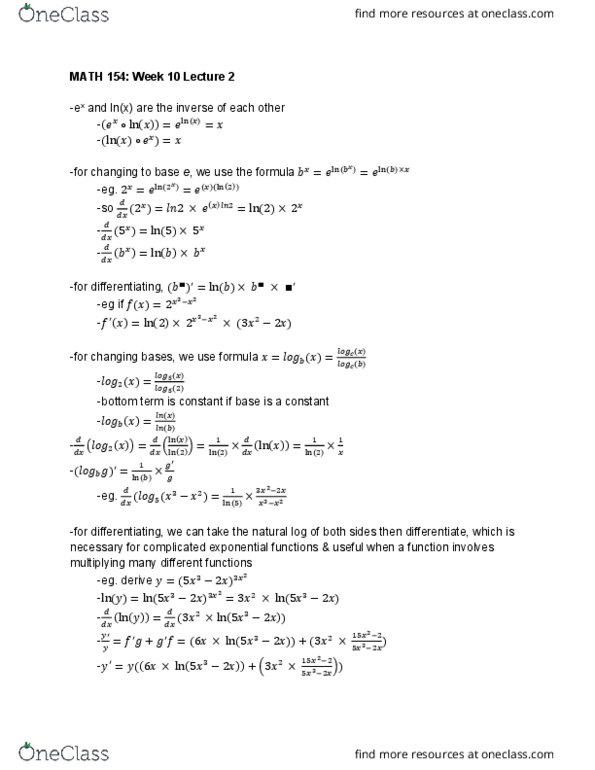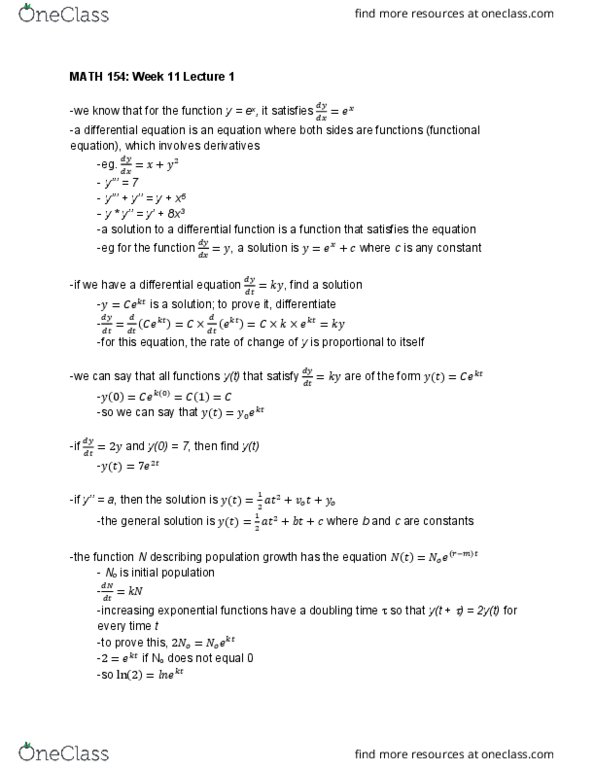MATH 154 Lecture 29: Differentiating Exponential Functions & Doubling
MATH 154 verified notes
29/38View all
Document Summary
Ex and ln(x) are the inverse of each other. For changing to base e, we use the formula (cid:3051)=(cid:1857)ln (cid:4666)(cid:4667)=(cid:1857)ln (cid:4666)(cid:4667) (cid:3051) For changing bases, we use formula (cid:1876)=(cid:1867)(cid:1859)(cid:4666)(cid:1876)(cid:4667)=(cid:3039)(cid:3042)(cid:4666)(cid:3051)(cid:4667) (cid:3039)(cid:3042)(cid:4666)(cid:4667) Bottom term is constant if base is a constant. For differentiating, we can take the natural log of both sides then differentiate, which is necessary for complicated exponential functions & useful when a function involves multiplying many different functions. Eg. define a function y = f(x) where f(0) equals 27, & y increases by a factor of 2 whenever x increases by 13. With the function (cid:1858)(cid:4666)(cid:1876)(cid:4667)=(cid:883)(cid:882)(cid:882) (cid:884)(cid:3117)(cid:3117)(cid:3116)(cid:3051), every time we increase x by 10, f(x) increases by. Consider (cid:1877)=(cid:1857)(cid:3038) where c & k are constants. Eg. define a function y = g(t) where g(0) equals 99 & y increases by a factor of 3 whenever t increases by 7. We can use this to make exponential functions for many different values.




